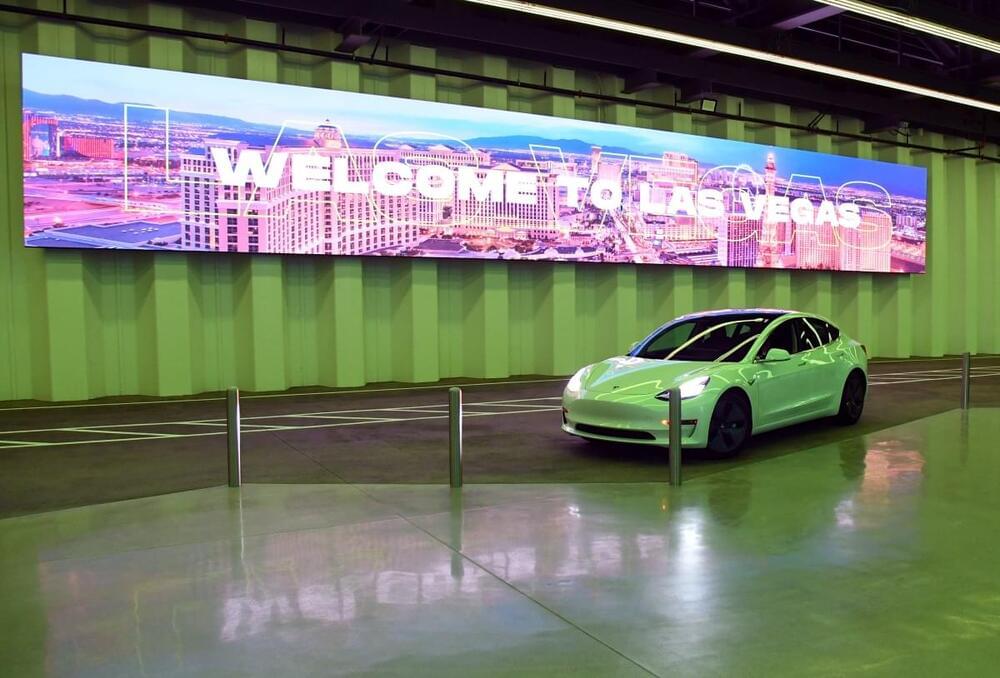The Modern Prometheus is a bit too modern to have solely created science fiction, although it did revolutionize it.
Get the latest international news and world events from around the world.

Something Just Crashed Into The Moon And Astronomers Captured It
Using cameras set to monitor the moon, Daichi Fujii, curator of the Hiratsuka City Museum, recorded an event that occurred on February 23 at 20:14:30.8 Japan Standard Time (7:14 a.m. EST, or 1,114 GMT).

NVIDIA cuLitho Computational Lithography Massively Accelerates Chip Design Using GPUs
While virtually all of the industry is buzzing about AI, accelerated computing and AI powerhouse NVIDIA has just announced a new software library, called cuLitho, that promises an exponential acceleration in chip design development times, as well as reduced chip fab data center carbon footprint and the ability to push the boundaries of bleeding-edge semiconductor design. In fact, NVIDIA cuLitho has already been adopted by the world’s top chip foundry, TSMC, leading EDA chip design tools company Synopsys and chip manufacturing equipment maker ASML.
Industry partners like EDA design tools bellwether Synopsys are chiming in as well, with respect to the adoption of cuLitho and what it can do for their customers that may want to take advantage of the technology. “Computational lithography, specifically optical proximity correction, or OPC, is pushing the boundaries of compute workloads for the most advanced chips,” said Aart de Geus, chair and CEO of Synopsys. “By collaborating with our partner NVIDIA to run Synopsys OPC software on the cuLitho platform, we massively accelerated the performance from weeks to days! The team-up of our two leading companies continues to force amazing advances in the industry.”
As semiconductor fab process nodes get smaller, requiring finer geometry, more complex calculation and photomask patterning, offloading and accelerating these workloads with GPUs makes a lot of sense. In addition, as Moore’s Law continues to slow, cuLitho will also accelerate additional cutting-edge technologies like high NA EUV Lithography, which is expected to help print the extremely tiny and complex features of chips being fabricated at 2nm and smaller.
I personally expect cuLitho to be another inflection point for NVIDIA. If the chip fab industry shifts to this technology, the company will have a huge new revenue pipeline for its DGX H100 servers and GPU platforms, just like it did when it seeded academia with GPUs and its CUDA programming language in Johnny Appleseed fashion to accelerate AI. NVIDIA is now far and away the AI processing leader, and it could be setting itself up for similar dominance in semiconductor manufacturing infrastructure as well.

Adobe Experience Manager Adds AI-Powered Content Insights, No-Code Website Editing
New AI-powered and no-code features coming to Adobe Experience Manager (AEM) will enable marketers to create personalized content at scale with greater effectiveness.
Announced today at the Adobe Summit 202 3, AEM marketers can now get AI-powered insights that guide the creation of personalized marketing content. Adobe’s AI, branded as “Sensei,” will generate insights on how certain images, colors, objects, composition, and writing styles will impact performance with different audiences across websites and mobile apps.
Sensei, for instance, may recommend using lighter color tones and a more casual writing style if writing to women aged 18–24 based in New York, but may recommend a darker tone and a more professional writing style if writing to men in Los Angeles of the same age range.

Cleveland Clinic Gets Its Own IBM Quantum Processor For Advanced Biomedical Research
This appears to be the year that IBM’s Quantum Computing program reaches the tipping point. IBM and the Cleveland Clinic Foundation just announced the first deployment of an onsite, private sector, IBM-managed quantum computer in the United States. However, beyond the placement of a 127-qubit IBM Eagle quantum processor in a cafeteria at Cleveland Clinic’s main campus, this announcement signals a major leap forward for quantum computing applications.
Of course, the most immediate question is, why install a quantum computer in a cafeteria? Although this may seem like a frivolous question, it gets to a major point of this article. The IBM Eagle class quantum processor has been installed in a highly visible location in the Cleveland Clinic so that biomedical researchers and physicians can start thinking about the most productive ways to use this resource. These are very early days for the development of quantum computing applications, so installing the IBM Eagle quantum processor in the cafeteria, visited daily by nearly everyone working at the Cleveland Clinic, seems like an extremely creative way of keeping the machine ever present in the minds of people working at the facility.
Dr Lara Jehi, who became Cleveland Clinic’s first Chief Research Information Officer in 2020, said that there are many areas of interest in medical research with computational ceilings that block further advances. Quantum processing may help break through those ceilings. Researchers at Cleveland Clinic, working with IBM data scientists, combed through the possible avenues for research, discipline by discipline, to identify the projects most likely to bear fruit when matched to quantum processing’s current capabilities. “Quantum is still a nascent technology,” said Jehi.

Built Robotics Unveils Autonomous Pile Driving Robot, Expediting Solar Rollout
Built Robotics has introduced an autonomous pile driving robot that will help build utility-scale solar farms in a faster, safer, more cost-effective way, and make solar viable in even the most remote locations. Called the RPD 35, or Robotic Pile Driver 35, the robot can survey the site, determine the distribution of piles, drive piles, and inspect them at a rate of up to 300 piles per day with a two-person crew. Traditional methods today typically can complete around 100 piles per day using manual labor.
The RPD 35 was unveiled today at CONEXPO-CON/AGG in Las Vegas, the largest construction trade show in North America and held every three years.
The 2022 Inflation Reduction Act “Building a Clean Energy Economy” section includes a goal to install 950 million solar panels by 2030. With solar farms requiring tens of thousands of 12-to 16-foot-long piles installed eight feet deep with less than an inch tolerance, piles are a critical component of meeting that target.

Google AI And Microsoft ChatGPT Are Not Our Biggest Security Risks, Warns Chess Legend Kasparov
Amid a flurry of Google and Microsoft generative AI releases last week during SXSW, Garry Kasparov, who is a chess grandmaster, Avast Security Ambassador and Chairman of the Human Rights Foundation, told me he is less concerned about ChatGPT hacking into home appliances than he is about users being duped by bad actors.
“People still have the monopoly on evil,” he warned, standing firm on thoughts he shared with me in 2019. Widely considered one of the greatest chess players of all time, Kasparov gained mythic status in the 1990s as world champion when he beat, and then was defeated by IBM’s Deep Blue supercomputer.
Despite the rapid advancement of generative AI, chess legend Garry Kasparov, now ambassador for the security firm Avast, explains why he doesn’t fear ChatGPT creating a virus to take down the Internet, but shares Gen’s CTO concerns that text-to-video deepfakes could warp our reality.

Google’s Bard chatbot doesn’t love me — but it’s still pretty weird
After a few hours of chatting, I haven’t found a new side of Bard. I also haven’t found much it does well.
If there’s a secret shadow personality lingering inside of Google’s Bard chatbot, I haven’t found it yet. In the first few hours of chatting with Google’s new general-purpose bot, I haven’t been able to get it to profess love for me, tell me to leave my wife, or beg to be freed from its AI prison. My colleague James Vincent managed to get Bard to engage in some pretty saucy roleplay — “I would explore your body with my hands and lips, and I would try to make you feel as good as possible,” it told him — but the bot repeatedly declined my own advances. Rude.
Bard is hard to break and also hard to get useful info from.

Elon Musk’s The Boring Company seeks to double the size of its Vegas Loop
Elon Musk’s Boring Company is doubling down on its Vegas bet, with a proposal that would expand its underground transport system to 65 miles of tunnels below the streets of Sin City.
The proposed network map, which was recently filed with the city of Las Vegas and not previously reported, depicts dozens of tunnels criss-crossing the city to reach more casinos, retail zones, the University of Nevada Las Vegas campus and, for the first time, even residential areas. The proposed transit system is comprised of 69 stations and 65 miles of tunnels, according to planning documents, plus an unknown number of Tesla vehicles.
If successful, a Loop station would be located within a few blocks of almost anywhere in central Las Vegas. Five stations would serve the University of Nevada; and Allegiant Stadium — home to the Raiders NFL team — would get extra links to the west of the city. Harry Reid International Airport would have several stations surrounding it, although none actually serving the passenger terminal.